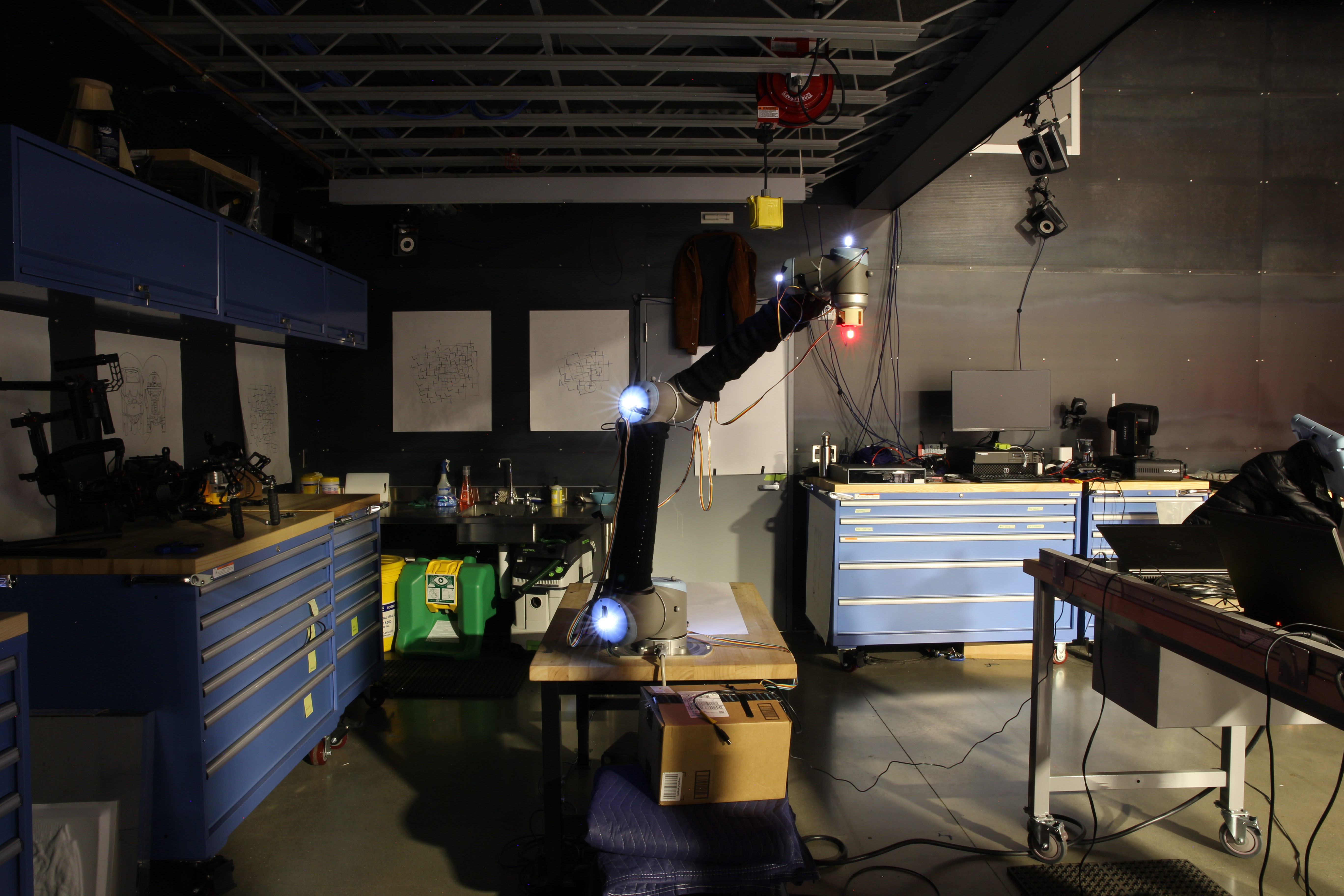Robot arm light painting
robot arm light painting¶

Architects typically a robot arm to move tools along paths, and the arm uses its inverse kinematic solver to achieve the necessary angles over time. However, if we were to move joints themselves, by so-called joint interpolation, we would discover resultant end-effector paths which relate to the way the robot arm is physically embodied. What kinds of forms could result from exploring the way a robot arm “wants” to move?
Using a Kinematic model of a master robot (a configutation file which specifies arm-lengths, offsets and joint attitudes of the robot), an Inverse Kinematic Solver calculates the possible positions of the arm components that satisfy the user-defined tool path along its length.
To visualize Inverse Kinematic solutions, the movements of the robotic arm’s elbow and shoulder can be traced while following a given end-effector tool path in a virtual simulator. Since more than one way of satisfying the end-effector constraints is usually possible, there exists a series of possible joint paths which could be visualized to represent a kind of “solution space” for the given tool path.
Read more here https://www.marrs.io/robot-light-painting/
